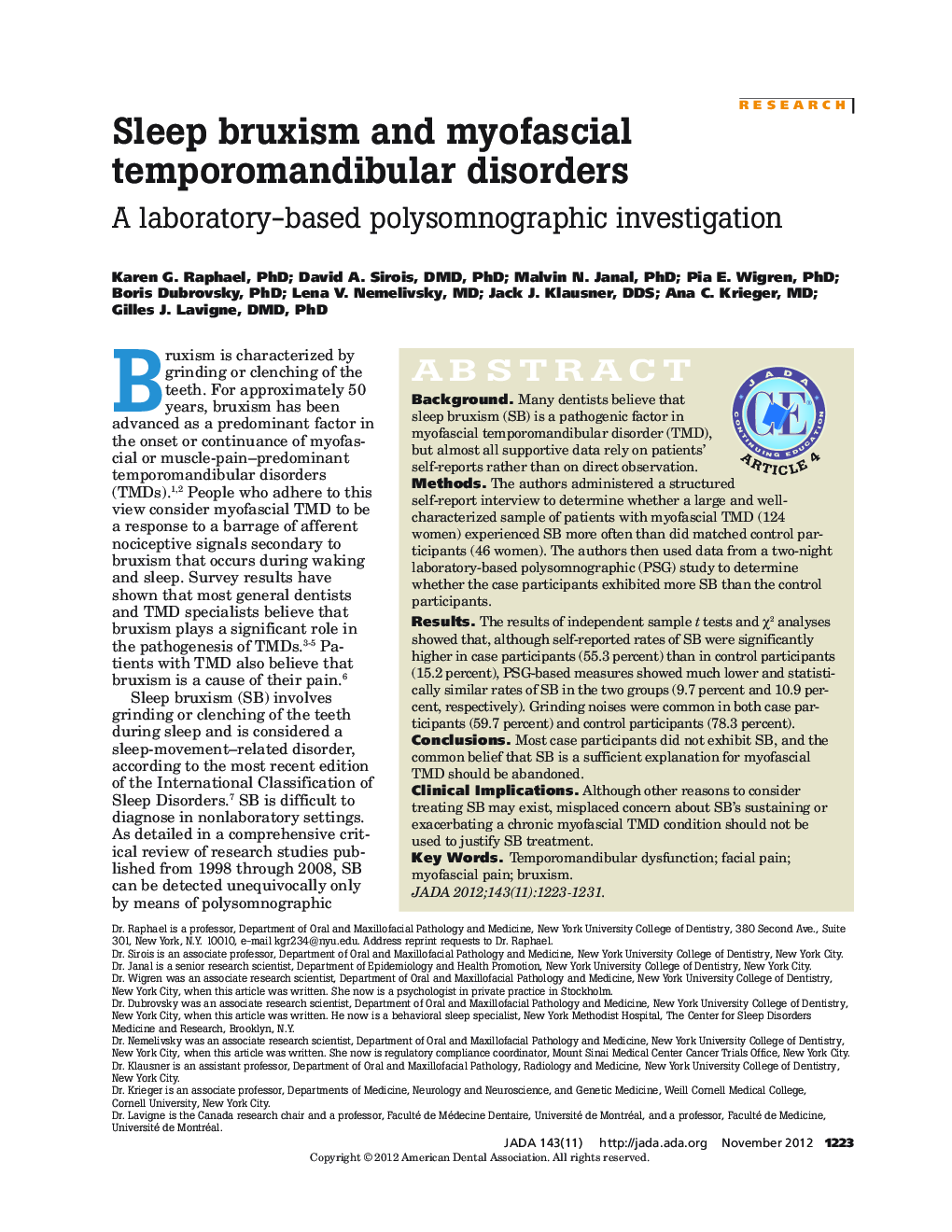| Article ID | Journal | Published Year | Pages | File Type |
|---|---|---|---|---|
| 3137846 | The Journal of the American Dental Association | 2012 | 9 Pages |
ABSTRACTBackgroundMany dentists believe that sleep bruxism (SB) is a pathogenic factor in myofascial temporomandibular disorder (TMD), but almost all supportive data rely on patients' self-reports rather than on direct observation.MethodsThe authors administered a structured self-report interview to determine whether a large and well-characterized sample of patients with myofascial TMD (124 women) experienced SB more often than did matched control participants (46 women). The authors then used data from a two-night laboratory-based polysomnographic (PSG) study to determine whether the case participants exhibited more SB than the control participants.ResultsThe results of independent sample t tests and χ2 analyses showed that, although self-reported rates of SB were significantly higher in case participants (55.3 percent) than in control participants (15.2 percent), PSG-based measures showed much lower and statistically similar rates of SB in the two groups (9.7 percent and 10.9 percent, respectively). Grinding noises were common in both case participants (59.7 percent) and control participants (78.3 percent).ConclusionsMost case participants did not exhibit SB, and the common belief that SB is a sufficient explanation for myofascial TMD should be abandoned.Clinical ImplicationsAlthough other reasons to consider treating SB may exist, misplaced concern about SB's sustaining or exacerbating a chronic myofascial TMD condition should not be used to justify SB treatment.
